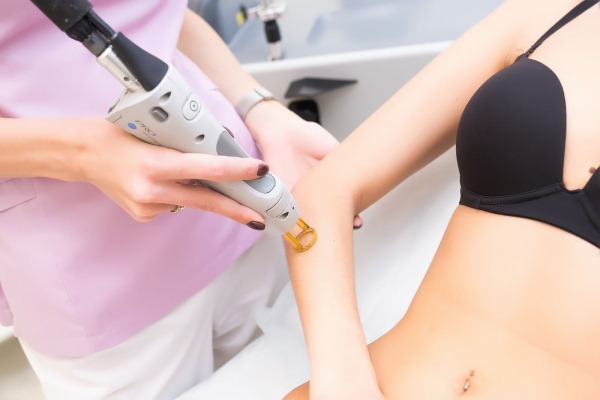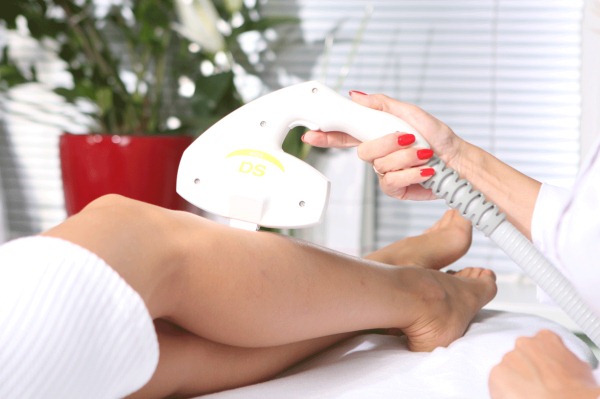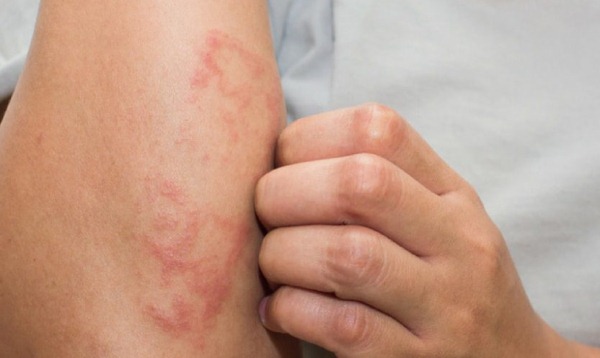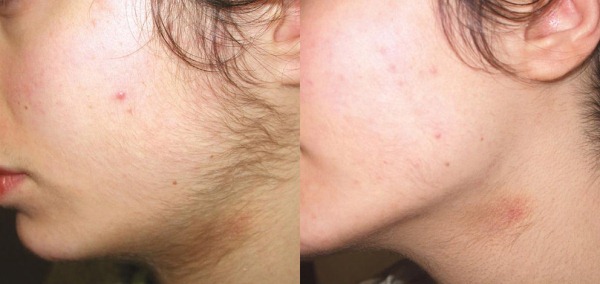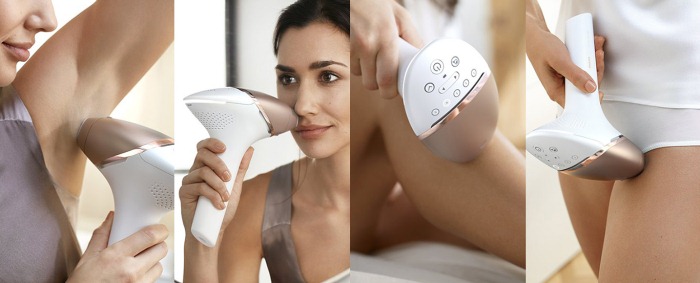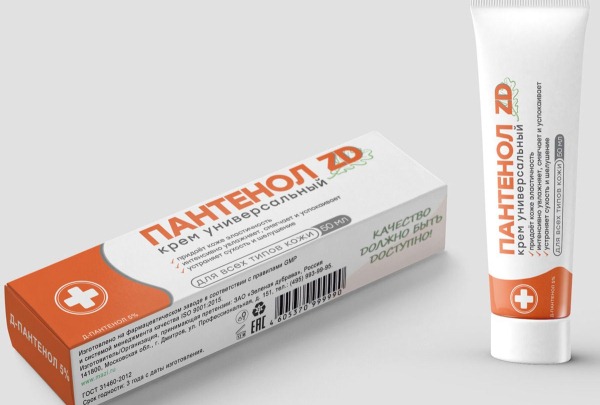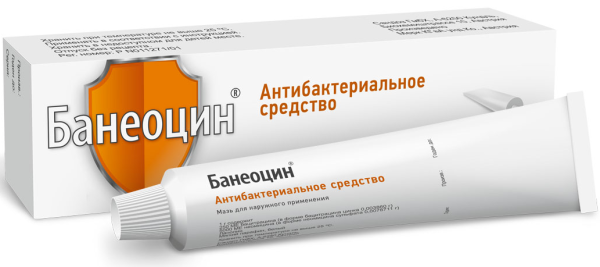Despite the existing contraindications and consequences, photoepilation very popular with women. The procedure allows you to painlessly and permanently remove unwanted hairs in any area of the body. The spread of this method was facilitated by the appearance of photoepilators, which can be used independently at home.
What is photo epilation? The principle of operation of the photoepilator
Photoepilation is a technology that allows you to remove hair using a flash of light emitted by a special device - a photoepilator. Its principle of action is based on the ability of melanin (a pigment contained in hair) to absorb light radiation and transmit them in the form of heat impulses to the hair follicles.
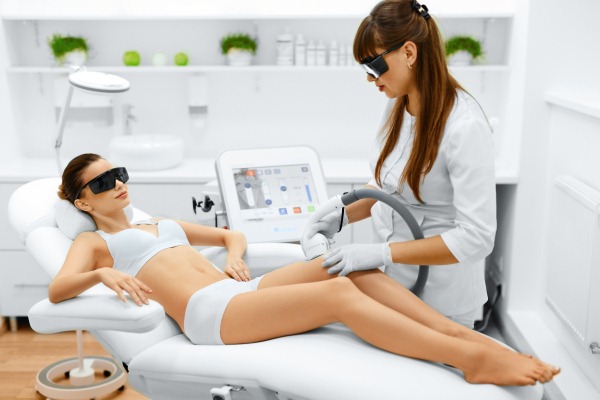
As a result, the temperature rises sharply to 80°C, causing the death of the bulb, which ensures the vitality of the hair shaft. An additional factor is blood clotting, leading to a cessation of the supply of nutrients to the hair follicle. To get rid of unwanted hair, you need to go through several procedures.
In some cases, the follicle is not completely destroyed, but irreversible processes occurring in it slow down hair growth, reduce its thickness and degree of pigmentation.
The flash of light only affects the follicles in the active phase. On average, their number is no more than 30% of the total. After 3-5 weeks the next 15-25% of the follicles "wake up", which is reflected in the appearance of a new portion of hair. Thus, in order to free one zone from "vegetation", it is necessary to carry out from 3 to 5 sessions of photoepilation.
Comparison of photoepilation with other types of hair removal
Photoepilation, contraindications and consequences of which in some cases do not allow this procedure to be carried out, has several alternative procedures.
Laser hair removal
The principle of operation of laser hair removal is based on hair removal by destroying hair follicles with a laser beam. As with photoepilation, the light wave is absorbed by melanin, heating and destruction of the hair matrix, its nourishing blood and lymph vessels, as well as the sebaceous glands.
The most efficient is a diode laser operating at a wavelength of 800 nm. It penetrates deeply into the skin and acts more precisely than the ruby and alexandrite counterparts. The main difference between photoepilation and laser is the ability to use light waves of different lengths.
Influencing hair in the phase of active growth, in one session the laser destroys only 10 - 25% of their volume. Therefore, the full course is from 6 to 10 procedures with an interval of 3-6 weeks.The number of sessions and the interval between them depends on the intensity of hair growth and the degree of their pigmentation.
You can select the radiation power in accordance with:
- thick hairs;
- melanin level;
- pigmentation of integuments;
- impact area;
- individual sensitivity.
Electrolysis
The principle of electrolysis is based on the destruction of the hair follicle with a short discharge of electric current. Hair deprived of nourishment becomes unviable and immediately falls out. For 1 session, only hairs that are in the phase of active growth are removed. Therefore, such 5-6 procedures are necessary.
The advantages of this method over photoepilation:
- removal of all types of hair (gray, bleached, vellus);
- instant result (the rod falls out immediately after exposure to the current);
- reduction in the duration of each subsequent session;
- preservation of the effect up to 5 years.
Disadvantages of electrolysis:
- soreness;
- the duration of the procedure is 2-3 hours;
- multiple contraindications;
- high probability of getting burns;
- the risk of scarring at the site of removal of coarse hairs;
- the need for a rehabilitation period, during which crusts form on the skin;
- the likelihood of getting into the wounds of infection with insufficient sterilization of instruments and disinfection of the treated areas.
ELOS epilation
The ELOS method of epilation combines the effect of light on melanin and an electromagnetic pulse on the follicle. The devices for the procedure are equipped with a cooling system that ensures the painlessness of the process. In terms of efficiency, ELOS exceeds other methods by 30%. Therefore, to eliminate hair, on average, no more than 4 procedures are needed.
Advantages of the technique:
- the ability to use on any areas of the body;
- painlessness;
- safety;
- impact on all types of hair;
- minimal risk of burns and redness;
- the possibility of epilation on tanned and dark skin.
Disadvantages of the method:
- high price;
- the presence of contraindications;
- mandatory high qualification of the specialist performing the procedure.
Today ELOS is the most innovative technology in the field of hair removal.
At what age can photoepilation be performed?
Photoepilation, the contraindications and consequences of which are constantly being studied by doctors and cosmetologists, can be used for adolescents under the age of 18, only with the written consent of parents or guardians. This provision is stipulated in the requirements of the Ministry of Health.
Depilation before the age of 16 with parental permission is allowed when an increased amount of hair on the face or other parts of the body, due to a genetic predisposition, has a negative impact on the mental state of the child.
There is no upper age threshold for photoepilation. However, one should take into account the factor that elderly people often develop pathologies that are contraindications to this procedure.
Impact on the health of women, men
Photoepilation is a safe procedure, provided that the specialist is highly qualified and the patient has no contraindications. To protect yourself from unexpected undesirable consequences, you should first visit a dermatologist and endocrinologist.
Extra care should be taken when removing hair from women on the face and in the deep bikini area. In men, such a sensitive area is the scrotum and perineum. Experts do not recommend photoepilation on very sensitive skin due to the high risk of scarring, irritation, allergies and age spots.
There is a myth that during photoepilation the lymph nodes and blood vessels are heated, leading to the development of pathologies and malignant neoplasms. This is especially true for the area of the armpits and groin.
This statement is devoid of scientific substantiation, since heating occurs only in the upper areas of the skin, where the hair follicles and sebaceous glands are located. While the structural elements of the lymphatic system are located in the deeper tissues of the body.
Contraindications to the procedure
Contraindications to photoepilation, which can cause negative consequences are the following temporary conditions:
- the presence of sunburn in the treated area;
- mechanical and thermal damage to the skin (cuts, abrasions, burns);
- allergic reactions;
- dermatitis of various nature;
- herpes;
- period of pregnancy and lactation;
- the use of drugs that increase the sensitivity of the epidermis to light.
After eliminating these factors, it becomes possible to carry out photoepilation. But there are diseases that taboo this procedure.
Among them should be highlighted:
- malignant and benign neoplasms, including moles and papillomas;
- diabetes;
- any hormonal disorders;
- age spots (porphyria).
Photoepilation is contraindicated when there is a tattoo on the skin. It is also better to postpone the procedure for 2-3 months after depilation by other hardware methods, wax or using shugaring.
Vision problems and eye diseases are not contraindications to this method of hair removal, since the organs of vision are reliably protected by glasses, which are equipped with inserts along the arches and fit snugly to the forehead and cheeks. Cover glasses or filter glasses are used as an alternative.
A direct indication for photoepilation in women and men is hypertrichosis, which is expressed in the excessive growth of long hair on any part of the body. However, isolated cases of increased hair growth were recorded in the treated areas. This phenomenon has received the scientific name - paradoxical hypertrichosis.
Scientists attribute it to thermal stimulation of dormant vellus hair follicles, which mutate, becoming dark and coarse. Such an individual feature of the body is recognized as a contraindication to photoepilation.
Photoepilation at home
The world leaders in the production of household photoepilators are Philips and Braun. The most popular models of appliances for home use are presented in the table.
| Model name | Features: | Prices |
| Philips BRI950 Lumea Prestige | Availability of a skin type identifier, additional attachments for the bikini area and face | RUB 31 650
|
| Philips Lumea Advanced SC199500 | Slide and Flash mode for smooth glide. No battery, no facial attachments and no bikini | RUB 16950 |
| Braun IPL BD 5001 | Small size, the presence of the Gentle mode, which allows you to remove hair with different intensity of dyeing | 19800 RUB |
| Braun IPL BD 3003 | The presence of a sensor for determining the type of skin and a work indicator. No battery and no bikini or face attachments | RUB 16,700 |
Preparing and conducting a session
Photoepilation, contraindications and consequences of which should be discussed with a dermatologist before performing at home, is carried out according to the following algorithm:
- shave the required area 2-3 days before the procedure;
- immediately before epilation, cleanse the skin with gommage or a gentle scrub;
- thoroughly wash off all hygiene products;
- let the skin dry completely.
After charging the device, you can start the procedure. In this case, it is necessary to ensure that there are no reflective surfaces nearby, from which the beam can be redirected into the eyes.
Epilation scheme:
- wear safety glasses;
- bring the device to the skin and check the settings (the indicator should light up green or blue);
- move the device along the skin surface at an angle of 45°;
- finish processing one section after the sound signal.
To reduce pain, a special gel should be applied to especially delicate areas, scattering light and reducing sensitivity.
During the session, you may feel a burning or tingling sensation.Lack of sensation indicates a too weak signal from the device, and pain indicates an excessively strong impulse.
Features of photoepilation on the face, in the deep bikini area
For depilation on the face and in the bikini area, you need special attachments with a small screen, a highly UV filter and a skin contact sensor. Before the procedure, you should check the sensitivity of the skin on the wrist. In the absence of discomfort, you can start treating the intimate area or face.
With the photoepilator installed perpendicular to the skin, wait for the touch sensor signal. After the repeated signal, the device is moved to another place. Due to the tenderness of the skin, it is not worth treating 1 area more than 1 time.
After the procedure, an antiseptic anti-inflammatory drug (Levomekol, Panthenol) must be applied to the treated area.
Periodicity of sessions
On average, the number of sessions varies from 7 to 10. This is due to the fact that household appliances are less powerful than their salon counterparts. It is very important to carry out the procedures at regular intervals of 3-4 weeks.
Effect duration
After the end of the course, you should repeat the epilation after 7-8 months. This will help prevent new hair from appearing.
Possible consequences of the procedure and how to eliminate them
After the procedure, side effects of varying intensity are possible. It can be mild swelling, hyperemia, itching. Do not worry if the unpleasant sensations gradually subside within 2-3 days. Otherwise, specialist advice is required.
Burning
The result of a beautician's mistake can be burns, manifested in the form of burning, pain, redness, the appearance of crusts and blisters. In this case, applying Panthenol or Bepanten to the damaged areas will help. They have antibacterial, anti-inflammatory and healing properties.
Swelling and peeling of the skin
Slight swelling and peeling of the skin after photoepilation indicates the individual sensitivity of the patient. If these phenomena are accompanied by itching, then it is worth taking antihistamines (Tavegil, Cetirizine, Kestin).
Acne, red rash
The appearance of acne and red rash, uncomplicated by a bacterial infection, should not be a cause for concern. Small purulent inflammations can be treated with antiseptic creams such as Miramistin and Baneocin.
If inflammation of the follicles occurs at the site of treatment, then it is worth contacting a dermatologist, and not trying to cope with the problem on your own.
Restrictions after photoepilation
Photoepilation (contraindications and its consequences can be minimized by proper follow-up care) after a session for 3-4 days requires abstinence from:
- sunbathing;
- visits to the solarium, baths, saunas;
- applying cosmetics to the treated areas.
Do not steam the hair removal zones in a hot water bath, expose them to cleansing with scrubs, gomazh or peelings. To prevent infection, you should not swim in open water. When going outside after removing facial hair, you should apply sunscreen with an SPF of more than 30.
The cost of the procedure in the salons
Prices for photoepilation procedures in Moscow salons vary depending on:
- institution status;
- its location;
- used equipment and materials;
- qualifications of specialists;
- the amount and degree of hair coloring.
Procedure cost:
- upper lip — 1000-3000 rubles;
- chin - 800-2500 rubles;
- armpit area - 1500 - 3500 rubles;
- bikini area - 3000 - 8000 rubles;
- hands - 2000 - 6500 rubles;
- legs - 9,000 - 32,000 rubles;
- back, chest - 4000 - 23000 rubles;
- midline of the abdomen - 650 - 4000 rubles.
Observing all the recommendations of specialists regarding contraindications, preparation and care of the treated area, you can avoid the undesirable consequences of photoepilation, and for the next 3-4 years you can enjoy smooth skin without unwanted hair.
Video about the rules of home photoepilation
How to do photoepilation at home yourself:

